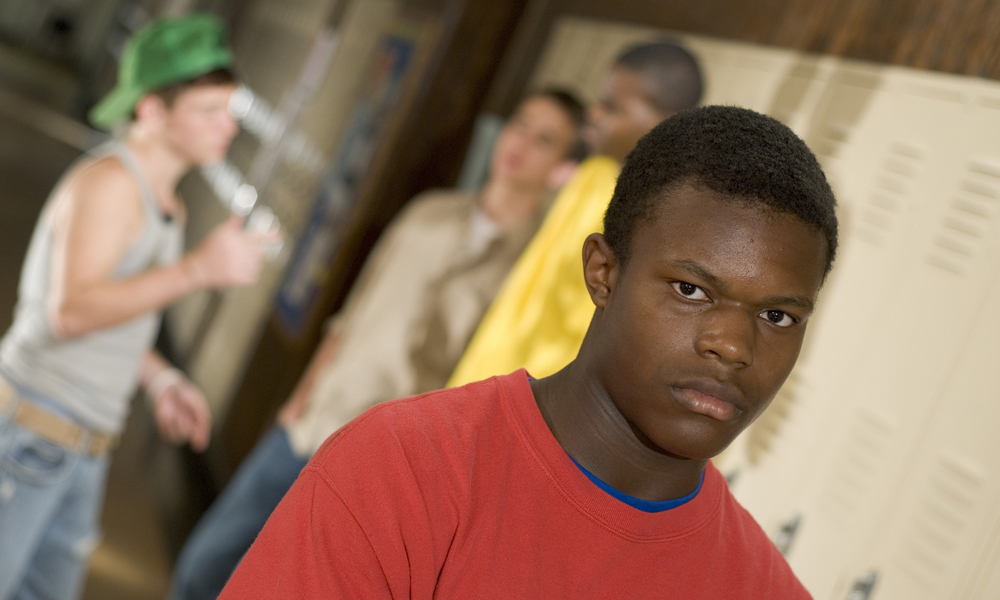Disproportionate minority contact means that racial/ethnic minority youth (particularly African American, Latinx/Hispanic American and American Indian/Native American youth) are involved in the U.S. juvenile justice system at rates that are both far higher than European-American youth and also above what would be expected based on a racial/ethnic group’s population. For example, African-American males comprise more than 35 percent of juvenile arrests, yet represent only 8 percent of the U.S. juvenile population.

Rebecca Fix
The pipeline from our juvenile justice system to our criminal (adult) justice system is overflowing with youth of color, and that is a problem. It’s concerning that racial/ethnic minority youth (especially African Americans) are overrepresented despite largely comparable types and rates of actual offending behavior. Put another way, youth of color are more likely to be arrested, detained and confined relative to European-American or white youth.
This increased involvement in the juvenile correctional system means these youths have a greater likelihood of suffering the consequences of justice involvement. Namely, youth who are detained and confined are at risk for more mental health problems, poorer educational and occupational outcomes and are 13.5 times more likely to be rearrested and confined. Altogether, racial/ethnic disparities in youth involved with the juvenile justice system can translate to fewer prospects, like missing out on educational and occupational opportunities.
Treatment of youth who become involved in the juvenile justice system impacts society at large. When these youth are confined, their reduced educational and occupational opportunities mean potentially higher crime rates for their community members, less economic output from the youth into the community and a greater likelihood of transmission of criminal behavior to the youth’s eventual children. Accordingly, it is important for us to not only understand how disproportionate minority contact occurs, but also to create change and reduce the likelihood of this phenomenon occurring.
Why it happens
So why are racial/ethnic minority youth like African Americans so over-represented in the juvenile justice system? Research suggests no single factor sufficiently explains disproportionate minority contact on its own, but there are a number of contributing factors that cumulatively result in the overrepresentation we see in the juvenile justice system. A number of criminological studies have tested for contributing factors, and seven predominant reasons for disproportionate minority contact have been identified. Several of these reasons are described below.
For more information on Racial-Ethnic Fairness, go to JJIE Resource Hub | Racial-Ethnic Fairness
Perhaps the most easily understood contributing mechanism to disproportionate minority contact is “differential selection,” the notion that decision-makers in the juvenile justice system (think professionals like police officers, juvenile probation officers and judges) treat youth of color more harshly than European-American youth. Different treatment for youth based on race/ethnicity (among other characteristics like gender and age) may be intentional or unintentional, but the results are the same. For instance, differential selection might look like African-American youth being stopped by the police more frequently than European-American youth despite having the same criminal record, being in the same location and engaging in the same behavior.
Justice by geography offers further explanation for disproportionate minority contact. This term suggests that youth will be treated differently by professionals within juvenile justice settings depending on where they are located during these interactions. Examples of locations include city versus suburb, wealthy versus poor neighborhood, and predominantly Asian-American versus predominantly Latinx/Hispanic neighborhood. Moreover, racial/ethnic stereotyping may be more prevalent in certain environments; research suggests that communities with more racial/ethnic minority youth see more interactions among youth, law enforcement and juvenile courts.
One more factor contributing to disproportionate minority contact is the differential opportunities or privileges for prevention and treatment that are available to some youth and not to others. Differential opportunities arise for youth depending on factors like their community, income level, beliefs about mental health care and education level. Because access to mental health care is often limited for youth of color for these reasons and more, racial/ethnic minority youth may be more at risk for delinquency.
Additionally, once an individual has engaged in illegal behavior, resources are differentially allocated such that European-American youth are more likely and able to get mental health assistance. For instance, European-American youth are more likely to benefit from restorative justice practices.
What can be done
It is clear disproportionate minority contact is a problem and that the reasons it occurs are multifaceted and complex. Although governmental agencies like the Office of Juvenile Justice and Delinquency Prevention have encouraged reduction of disproportionate minority contact for decades, youth of color are still discouragingly overrepresented. Fortunately, there are ways to reduce disproportionate minority contact in the juvenile justice system at the national and local levels.
Advocating for national and statewide change is a crucial step in our movement toward disproportionate minority contact reduction. At the highest level, the development of legislation mandating efforts to reduce disproportionate minority contact are needed. Methods for intervening at the local level are described within the Disproportionate Minority Contact Technical Assistance Manual (4th Edition). At the local level, we as citizens can encourage suspension reduction programs, as suspension is often the first step in the school-to-prison pipeline that disproportionately affects youth of color.
Each of us can take action to make changes that will reduce disproportionate minority contact, not just professionals who are directly involved in the judicial and educational systems. If you are a parent or caregiver, talk with your children. Teach them about racial/ethnic bias at home and in the classroom. Encourage individuals to develop awareness of their biases, and how to react to them.
Of course, all this means starting with yourself first. Think about how you can advocate for people of color in your community or in neighboring communities. Learn more about your own bias and examine how you have been socialized to think about people from different demographic groups, extending beyond race/ethnicity (e.g., women, persons who are of the Islamic faith, individuals who identify as transgender). The more we work toward resolution of disproportionate minority contact, the greater our success rate will be.
Dr. Rebecca L. Fix is an assistant scientist in the Department of Mental Health within the Johns Hopkins Bloomberg School of Public Health. Her research focuses on juvenile sexual and violent offending among youth who identify as racial/ethnic minorities, and disparities in the juvenile justice system that impact youth with adjudicated violent and sexual offenses.

This information should open eyes for many. To educate society is very important to adults for juvenile sake.